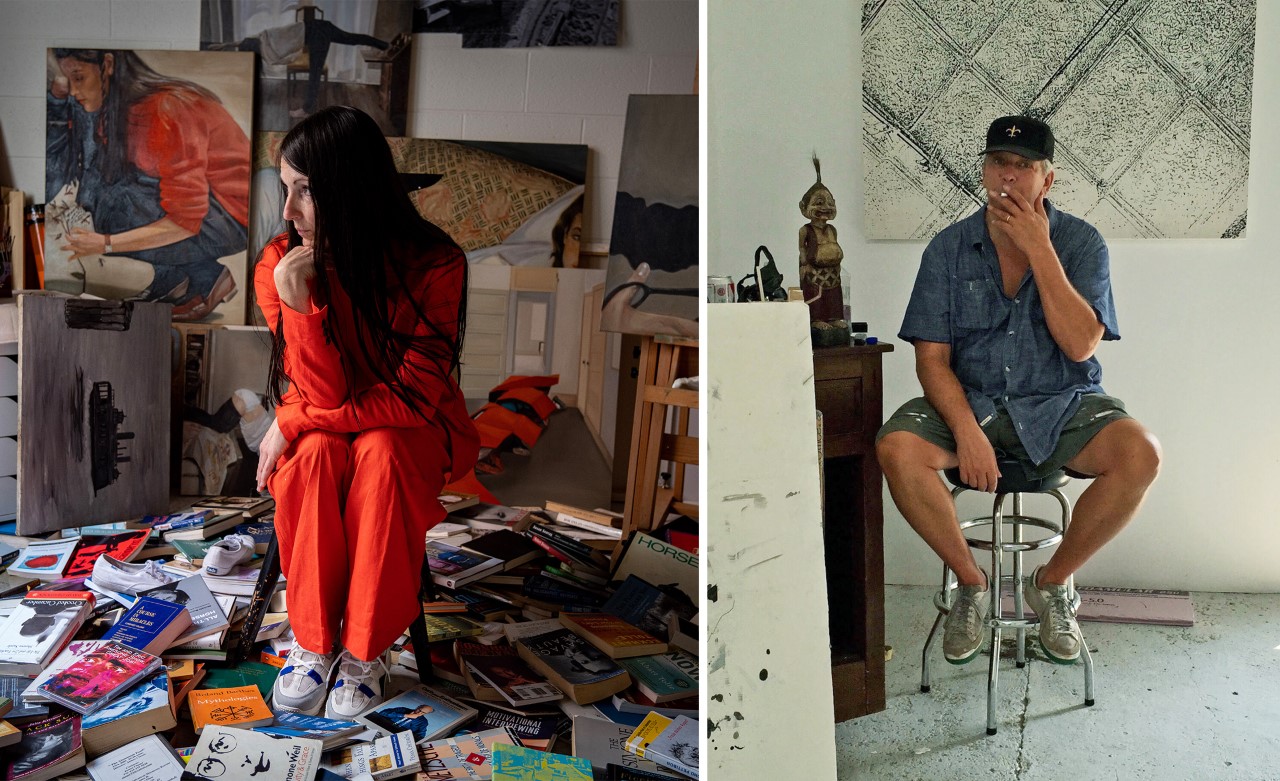
On January 18th, Shannon Cartier Lucy’s first New York solo show in a decade—“Home is a crossword puzzle I can’t solve” —opened at Lubov gallery in Chinatown. Despite her career’s upward momentum at the time, the artist fled New York a few years after 9/11, leaving behind her a nagging heroin habit among other things. With New York City out of the picture, Lucy got clean, pursued a masters degree and became a psychotherapist. The artist had grown up with a schizophrenic father, piquing her interest in psychotherapy and imparting its influence on her painting practice. “It was customary in my home to find a toaster in the freezer of The Holy Bible in the dishwasher,” Lucy said in an artist statement. Her paintings reflect this quality of coolly normalized strangeness: in one of the show’s paintings, a woman carries a grocery bag full of swans as if they were baguettes; in another, a glass bowl containing three swimming goldfish is placed atop a stove’s heated burner.
On January 16th, painter Michael St. John opened, “Democracy Portraits,” at Team Gallery on the Lower East Side. St. John’s show also brims with a similarly distanced quality of unease as the artist chronicles America’s ravenous appetite for violence dressed in the drag of love, and love in the drag of violence.
The two artists have been close friends since Lucy lived in New York, though they have both since settled elsewhere (Lucy resides in Nashville and St. John in Massachusetts). As of February 2020, both artists will be represented by De Boer Gallery in Los Angeles. With two coinciding solo exhibitions in adjacent Manhattan neighborhoods, the two speak here about addiction, home and painting.
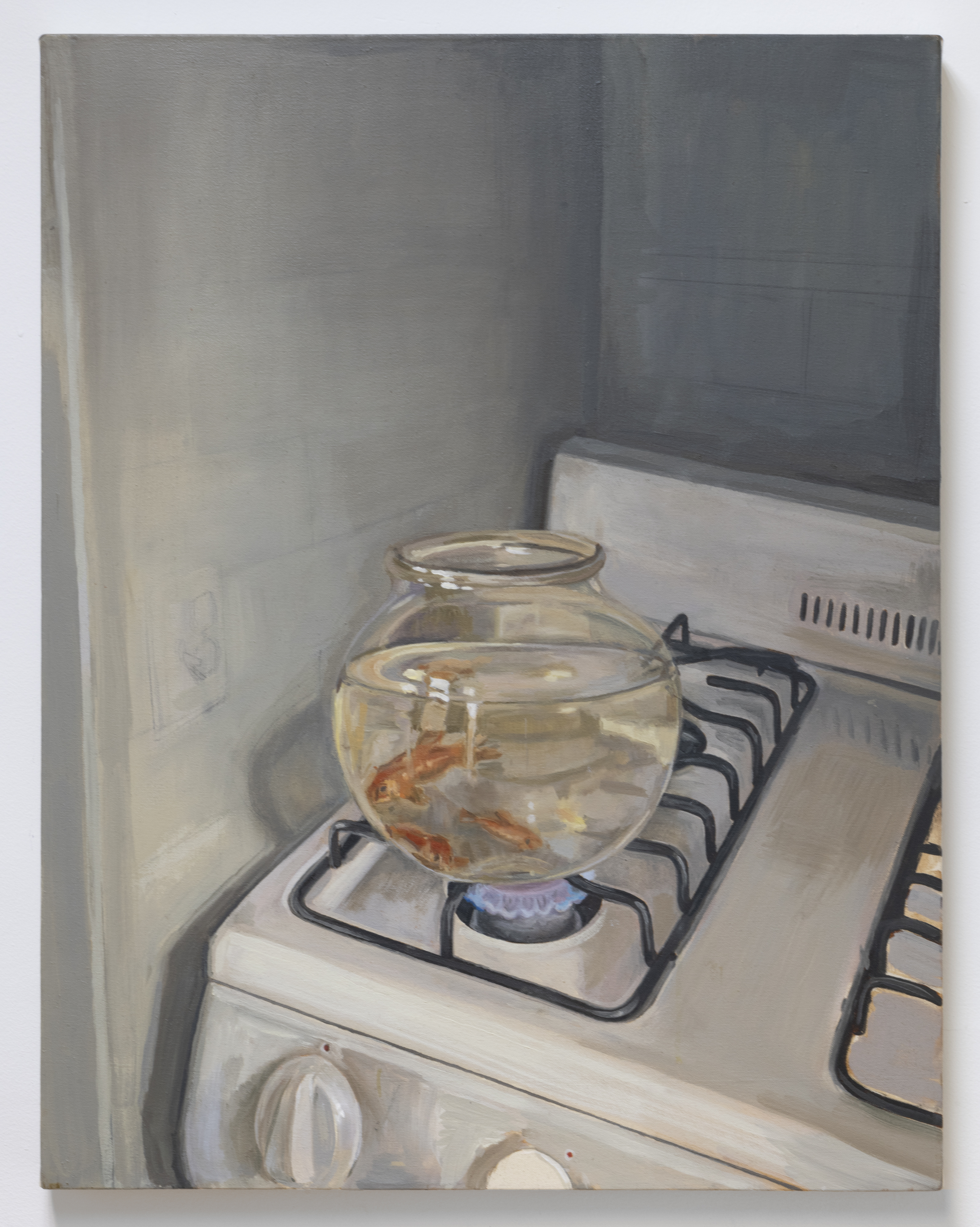
Michael St. John: Hi Shannon. Welcome back!
Shannon Cartier Lucy: Thank you!
MSJ : How was Peru?
SCL: Thank you, traveling was exhausting, overstimulating, but I love that I get to travel more these days.
MSJ: Do you think living in Nashville now, instead of New York City, gives you a freedom of pursuit?
SCL: For me, yes absolutely. Living outside the bustle of NYC works much better for me. I think I’m also just chilling out as I age. I feel a freedom from any pressure to measure and compare myself, like I did when I was younger and living in the city.
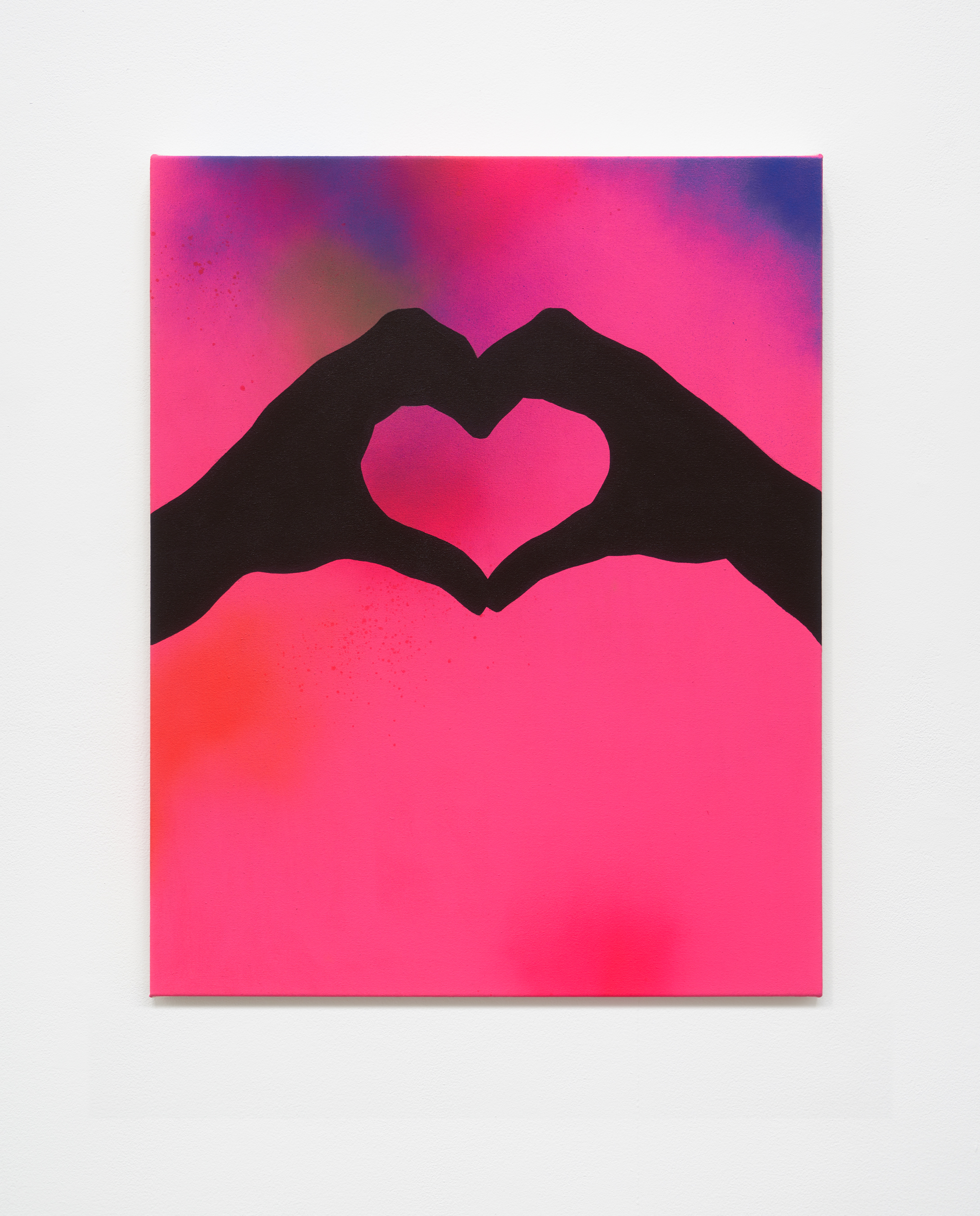
SCL: What about your experience leaving the city? Does living where you do now, outside of NYC, give you a sense of freedom and happiness?
MSJ: Living in Massachusetts is incredibly boring which leaves me all the time I want to think and make art. It’s a luxury I couldn’t have in the city. There’s no compression of time, it’s minute by minute and welcomed for making and what to make. Space and time are highly undervalued.
Speaking of moving, your first exhibition which, openned Saturday at Lubov gallery, is titled, “Home is a crossword puzzle I can’t solve.” How did you come up with this title? What meaning does this have for you?
SCL: I lifted the title from a poem by the early 20th century Russian poet Marina Tsvetaeva. The title probably does have to do with my leaving the city a few years ago, but I think it has more to do with the shifting life circumstances that caused me to leave. The idea of home seems riddled with incoherencies and paradoxes. It’s a word that’s associated with sanctuary and relief, a place where you feel in control and properly oriented. It’s not just a place, though, but more of a person’s center of gravity. Home is the connection between you and the world. It can be unnerving and tender at the same time.

MSJ: You have a very singular perspective that catches the viewer off-guard, not in a surreal way, but a psychological one.
SCL: Well, that makes sense—I paint what I know, in a very visceral way. My work is autobiographical. But I didn’t paint for almost 10 years! A series of life-difficulties led me to having, I guess you could call it a nervous breakdown or an early mid-life crisis. My marriage fell apart, I got sober, left New York after 16 years and travelled the world in an Eat, Pray, Love kind of way.
I eventually became a psycho-therapist and then these paintings started coming out of me. I guess making the paintings allows me to psychologically recalibrate and start again. I would highly recommend nervous breakdown.
Have you ever experienced this sort of thing?
MSJ: Never had a break, but the closest thing to that for me was being a meth addict, which turned out to be very clearing. It enabled a distance for seeing, like the difference between sentiment and emotion.
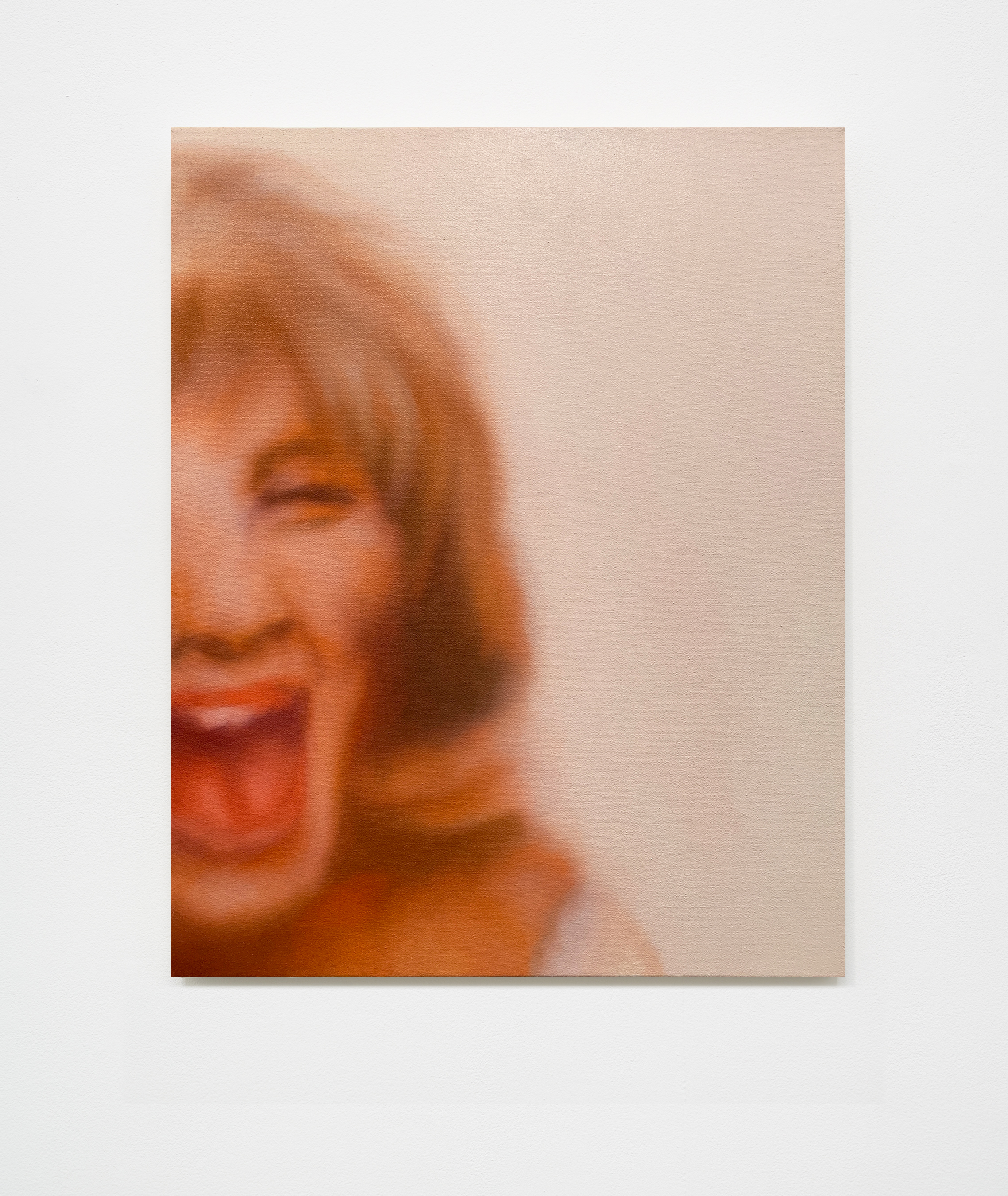
SCL: For some reason, when I hear nervous breakdown, I always picture that scene from the television show Mary Hartman, Mary Hartman. Do you know the show?
MSJ: No.
SCL: In this one scene, Mary, a housewife played by the amazing Louise Lasser, is a guest on a TV show, and she assumes she’ll be asked about her favorite household products. Instead the host asks if she is truly fulfilled in her life and she gets so flummoxed she has a minor breakdown on air. It’s incredible.
I guess I’m generally drawn to women having nervous breakdowns. I love that show Snapped on the Oxygen channel. Sometimes, they can manifest in outwardly violent ways, but I see it more as a deep psychological process—a dissolution of self, a break from idealism, and a kind of awakening.
Your girl Joan Didion wrote about that kind of stuff, didn’t she?
MSJ: Yeah.
SCL: She talked about when a person starts to become disillusioned, and starts questioning the stories they’d ever told themselves. The gift of being continually humbled is that there’s not much room for arrogance that holding onto old ideas can bring. I think she talks about that in The White Album?
Are you showing your paintings of Joan Didion? Are you a big fan of hers?
MSJ: Yes, her painting is in the show. I’m interested specifically in her two books The White Album and Slouching Towards Bethlehem. The way she sees and reports what’s in the corners and overlooked to represent the content is very meaningful to me. I feel the same way with Eggleston.
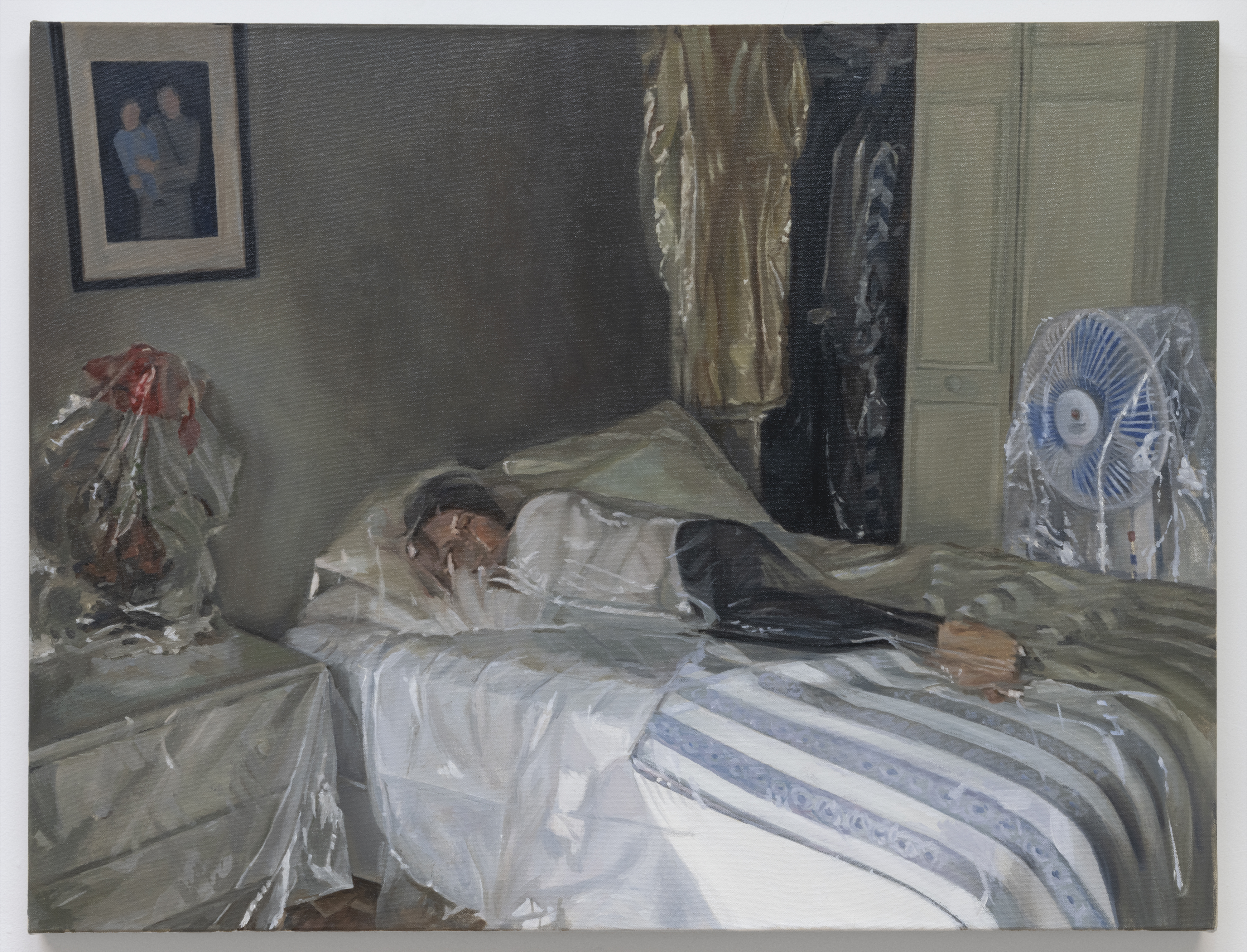
SCL: To what extent would you consider your work autobiographical?
MSJ: I think of what I do as a recording of my time, the ideas of my time, the news of my time, the time I live in, for better or worse.
SCL: What role does it play when it comes to looking at and experiencing other people's art?
MSJ: Looking at other people’s art I expect imagination, invention and what do they have to say.
SCL: When I look at other people’s art, I really do hope to see some deep personal truth in the work, real vulnerability and also effort. I tend to be attracted to the real obsessive artist-types.




